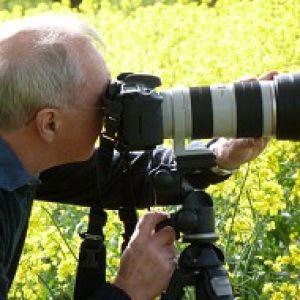The Undercroft
Another exhibition visit today (this is a great year for photographic exhibitions). This time it was "Diane Arbus - in the beginning" at the Hayward Gallery in London.
This was a large collection of her early photographs (mostly printed by her). It can be difficult studying photographs taken in the 1950's and early 1960's with a modern photographer's eye. The technical constraints and difficulties then, compared to modern digital photography, were considerable. Many of the photographs were taken in low light conditions, and available film speeds meant that slow shutter speeds were required (no opportunity simply to wind up the ISO to the crazy sensitivities now available to us). The result was that many of the photographs were, to put it bluntly, blurred. (One image was even entitled "Blurred woman looking up".) Many of the compositions also seemed less than ideal and she didn't appear to have the best darkroom skills. (I have to say, I was rather reminded of my early attempts at photography.)
It wasn't until I walked around the exhibition a second or third time that I began to recognise the value of many of the images, capturing life in New York at that time - with a bias towards "freaks" including circus performers, dwarfs, giants, transvestites and female impersonators.
It is interesting to compare these photographs with others also taken in the mid 1950s, also on 35mm film; I'm thinking of Robert Frank's "The Americans" (which I browsed through in the gallery's bookshop) which appeared far superior both technically and compositionally to the images in today's exhibition - although I acknowledge that the book contains only 83 images from the many thousands that Frank made in his journey across America and most, I seem to recall, in brighter lighting conditions.
I also compare the pictures I saw today with somewhat comparable images of "low life" in a city after dark taken by Brassai in Paris in the 1930s (as published in his book "The Secret Paris"). Again these are well constructed images and technically far superior, though that can at least partially be explained by his use of a small plate camera (not small 35mm film) and a tripod.
Maybe it just needed a tighter selection of Arbus' images to demonstrate that her photography was on a par with these other practitioners (did I really need to see her photographs of images on a TV screen, or images projected on to a cinema screen?). However, looking at her photographs in the context of the development of photographic styles at that time and, perhaps, particularly among American photographers, I can see that her work was important and influential in that development and there are many notable images (possibly taken later in her career when she moved on to a 2 1/4 square Rolleiflex) which hold their own in any history of photography.
A worthwhile exhibition for anyone interested in the history of photography.
Afterwards I wandered along the South Bank, passing the Undercroft skate park, where I saw the two seated girls in my blip. This location was a chance to try out some of the features in my new Panasonic camera (which I am still getting to grips with). I took pictures of the skateboarders using the "4K photo" feature of the camera, which allows me to extract single 8 MPixel frames from 30 fps 4K movies. Interesting results, but the low level of lighting here means I need to use a higher ISO than the 1250 setting I was using today in order to freeze the fast moving action. I haven't really pushed the ISO too far yet on this Micro Four Thirds camera; I know it won't give the clean images I can get from my full frame DSLR, but I need to experiment further.

Comments
Sign in or get an account to comment.


